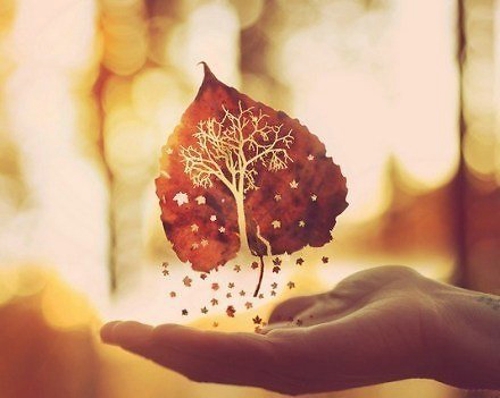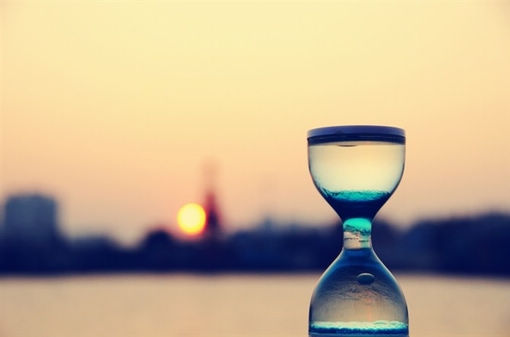
求关于法国的英文演讲稿
Paris has long inspired opinionated outbursts, from delusional to denouncing, but on one matter travelers remain in agreement: it’s among the most stimulating cities in the world. Paris assaults all the senses, demanding to be seen, heard, touched, tasted and smelt. From luminescent landmarks to fresh poodle droppings on the pavement, the city is everything it should be - the very essence of all French things. If you come here expecting all you’ve heard to be true, you won’t leave disappointed. Paris is at its best during the temperate spring months (March to May), with autumn coming in a close second. In winter, there are all sorts of cultural events to tempt the visitor, but school holidays can clog the streets with the little folk. August is usually and sticky, and it’s also when many Parisians take their yearly vacations, so businesses are likely to be closed. Musée du is probably one of the most world-renowned sightseeing places in Paris. This enormous building, constructed around 1200 as a fortress and rebuilt in the mid-16th century for use as a royal palace, began its eer as a public museum in 1793. As part of Mitterand’s grands projets in the 1980s, the was revamped with the addition of a 21m (67ft) glass pyramid entrance. Initially deemed a failure, the new design has since won over those who regard consistency as inexcusably boring. Vast scrums of people puff and pant through the rooms full of paintings, sculptures and antiquities, including the Mona Lisa, Venus de and Winged Victory (which looks like it’s been dropped and put back together). If the clamor becomes unbearable, your best bet is to pick a period or section of the Louvre and pretend that the rest is somewhere across town. Eiffel Tower This towering edifice was built for the World Fair of 1889, held to commemorate the centennial of the French Revolution. Named after its designer, Gustave Eiffel, it stands 320m (1050ft) high and held the record as the world’s tallest structure until 1930. Initially opposed by the city’s artistic and literary elite - who were only affirming their right to disagree with everything - the tower was almost torn down in 1909. Salvation came when it proved an ideal platform for the antennas needed for the new science of radio telegraphy. When you’re done peering upwards through the girders, you can visit any of the three public levels, which can be accessed by lift or stairs. Just south-east of the tower is a grassy expanse that was once the site of the world’s first balloon flights and is now used by teens as a skateboarding arena or by actists bad-mouthing Chirac. Avenue des Champs-élysées A popular promenade for the ostentatious aristos of old, the Avenue des Champs-élysées has long symbolised the style and joie de vre of Paris. Encroaching fast-food joints, showrooms and cinemas have somewhat dulled the sheen, but the 2km (1mi) long, 70m (235ft) wide stretch is still an ideal place for evening walks and relishing the food at overpriced restaurants. Centre Georges Pompidou The Centre Georges Pompidou, displaying and promoting modern and contemporary art, is far and away the most visited sight in Paris. Built between 1972 and 1977, the hi-tech though daffy design has recently begun to age, prompting face-lifts and closures of many parts of the centre. Woven into this mêlée of renovation are several good (though pricey) galleries plus a free, three-tiered library with over 2000 periodicals, including English-language newspapers and magazines from around the world. A square just to the west attracts street musicians, Marcel Marceau impersonators and lots of unsavoury types selling drugs or pic pockets. Notre Dame The city’s cathedral ranks as one of the greatest achievements of Gothic architecture. Notre Dame was begun in 1163 and completed around 1345; the masse interior can accommodate over 6000 worshippers. Although Notre Dame is regarded as a sublime architectural achievement, there are all sorts of minor anomalies as the French love nothing better than to mess with things. These include a trio of main entrances that are each shaped differently, and which are accompanied by statues that were once coloured to make them more effective as Bible lessons for the hoi polloi. The interior is dominated by spectacular and enormous rose windows, and a 7800-pipe organ that was recently restored but has not been wor properly since. From the base of the north tower, visitors with ramrod straight spines can climb to the top of the west fa?ade and decide how much aesthetic pleasure they derive from loo out at the cathedral’s many gargoyles - alternatively they can just enjoy the view of a decent swathe of Paris. Under the square in front of the cathedral, an archaeological crypt displays in situ the remains of structures from the Gallo-Roman and later periods. Sainte Chapelle Lying inside the Palais de (law courts), Sainte Chapelle was consecrated in 1248 and built to house what was reputedly ’ crown of thorns and other relics purchased by King Louis IX earlier in the 13th century. The gem-like chapel, illuminated by a veritable curtain of 13th-century stained glass (the oldest and finest in Paris), is best viewed from the law courts’ main entrance - a magnificently gilded, 18th-century gate. Once past the airport-like security, you can wander around the long hallways of the Palais de and, if you can find a court in session, observe the proceedings. Civil cases are heard in the morning, while criminal trials - usually reserved for larceny or that French speciality crimes passionnel - begin after lunch. Musée d’Orsay Spectacularly housed in a former railway station built in 1900, the Musée d’Orsay was reinaugurated in its present form in 1986. Inside is a trove of artistic treasures produced between 1848 and 1914, including highly regarded Impressionist and Post-impressionist works. Most of their paintings and sculptures are found on the ground floor and the skylight-lit upper level, while the middle level has some magnificent rooms showcasing the Art-Nouveau movement. Nearby, the Musée Rodin displays the lively bronze and marble sculptures by Camille Claudel and Auguste Rodin, including casts of some of Rodin’s most celebrated works. There’s a sculpture garden out the back, one of Paris’ treasured islands of calm. Cimetière du Père Lachaise [R-p5]Established in 1805, this necropolis attracts more visitors than any similar structure in the world. Within the manicured, evergreen enclosure are the tombs of over one million people including such luminaries as the composer Chopin; the writers Molière, Apollinaire, Os Wilde, Balzac, Marcel Proust and Gertrude Stein; the artists , Delacroix, Pissarro, Seurat and Modigliani; the actors Sarah Bernhardt, Simone Signoret and Yves Montand; the singer édith Piaf; and the dancer Isadora Duncan. The most visited tomb, however, is that of The Doors lead singer, Jim Morrison, who died in Paris in 1971. One hundred years earlier, the cemetery was the site of a fierce battle between Communard insurgents and government troops. The rebels were eventually rounded up against a wall and s, and were buried where they fell in a mass grave. Place des Vosges The Marais district spent a long time as a swamp and then as agricultural land, until in 1605 King Henry IV decided to transform it into a residential area for Parisian aristocrats. He did this by building Place des Vosges and arraying 36 symmetrical houses around its square perimeter. The houses, each with arcades on the ground floor, large dormer windows, and the requisite creepers on the walls, were initially built of brick but were subsequently constructed using timber with a plaster covering, which was then painted to look like brick. Duels, fought with strictly observed formality, were once staged in the elegant park in the middle. From 1832-48 Victor Hugo lived at a house at No 6, which has now been turned into a municipal museum. Today, the arcades around the place are occupied by expensive galleries and shops, and cafés filled with people drinking little cups of coffee and air-kissing immaculate passersby. Bois de Boulogne The modestly sized Bois de Boulogne, on the western edge of the city, is endowed with forested areas, meandering paths, belle époque cafes and little wells of naughtiness. Each night, pockets of the Bois de Boulogne are taken over by prostitutes and lurkers with predacious sexual tastes. In recent years, the police have cracked down on the area’s sex trade, but locals still advise against walking through the area alone at night. Outer ?le de France The relatively small region surrounding Paris - known as the ?le de France (Island of France) - was where the kingdom of France began its 12th-century expansion. Today, it’s a popular day-trip destination for Parisians and Paris-based visitors. Among the region’s many attractions are woodlands ideal for hiking, skyscrapered districts endowed with sleekly functional architecture, the much-maligned EuroDisney, elegant historical towns and Versailles, the country’s former political capital and seat of the royal court. The latter is the site of the Chateau de Versailles, the grandest and most famous palace in France. Built in the mid-1600s during the reign of Louis XIV, the chateau is a keen reminder of just how much one massive ego and a nation’s wealth could buy in days of old (eat your heart out, Bill Gates). Apart from grand halls, bedchambers, gardens, ponds and fountains too elaborate to discuss, there’s also a 75m (250ft) Hall of Mirrors, where nobles dressed like ninnies could watch each other dancing. Canal Saint Martin The little-touristed Saint Martin canal, running through the north-eastern districts of the Right Bank, is one of Paris’ hidden delights. The 5km (3mi) waterway, parts of which are higher than the surrounding land, was built in 1806 to link the Seine with the much longer Canal de l’Ourcq. Its shaded towpaths - specked with sunlight filtering through the plane trees - are a wonderful place for a romantic stroll or bike ride past locks, metal bridges and unassuming but well turned-out Parisian neighbourhoods. Paris has two airports, Aéroport d’Orly, south of central Paris, and Aéroport Charles de Gaulle, in the north, is a major international hub, so you shouldn’t have any trouble finding a flight, regardless of where you’re flying. Paris is also famous for its sophisticated underground system, known as Metro. No matter where you are, chances are that there’s a metro station within a few blocks. Europe is famous for its fascinating cultural background and the same is true to Paris. Why shall you wait? It’s well worth visiting it.
求一篇英语演讲稿,3分钟即可,200词左右,题目:法国巴黎的埃菲尔铁塔。
谢谢。
急需,尽求自己写,谢
Culture of French FoodFrench cuisine is extremely diverse, with only the Chinese having similar variety in their food. This variety is supported by the French passion for good food in all its forms, France's extraordinary range of different geographies and climates which support the local production of all types of ingredients, and France's long and varied history. In many ways, an understanding of the culture of French food and recipes is an understanding of France itself.Meals range from the very basic, such as the traditional baguette plus cheese plus inexpensive wine, to very elaborate affairs than can involve a dozen courses and different wines consumed over several hours. Obviously, the latter type of dining is exceptional for most people. However, it is this more sophisticated dining which is typically found in French restaurants outside France, giving many foreigners the mistaken impression that French food is heavy and complicated. In fact, much of the French cuisine is fairly simple, relying on high quality fresh ingredients and loving preparation rather than complex recipes.It is common in much of France to take a two hour break for lunch, with many working parents (particularly in villages and smaller towns) returning home for lunch. In some areas, mainly in the south of France, even longer lunch breaks are taken. Due to the long lunch break, businesses which close for this period typically reopen around 2PM or so and then stay open until about 7PM.法国食品文化法国菜是极为不同的,只有中国有类似的各种食品。
该品种是由法国支持的热情好粮食的所有形式,法国的非凡的各种不同的地域和气候条件下,支持当地生产的所有类型的原料,和法国的长期和不同的历史。
从许多方面来说,了解法国文化的食物和食谱是一个了解法国本身。
膳食范围从非常基本的,如传统的面包加奶酪加上廉价的葡萄酒,以极其复杂事务比可能涉及12个课程和不同的葡萄酒消费超过几个小时。
显然,后一类是特殊的饮食对大多数人。
然而,正是这种更先进的餐饮通常是在“法国餐厅”在法国以外,使许多外国人的错误印象,以为法国食品是沉重而复杂的。
事实上,许多法国菜很简单,依靠高品质的新鲜素材和爱好,而不是复杂的准备菜谱。
这是常见的大部分法国采取两个小时的休息,午餐,许多外出工作的家长(特别是在乡村和小城镇)回家吃午饭。
在一些地区,主要是在法国南部,甚至更长的时间午餐休息时采取。
由于长期午休,企业关闭重开这一时期通常在下午2点左右,然后继续开放至晚上7时左右。
英语:关于最喜欢一本书(最好是名著)的演讲稿
Celebrity biography by the French famous writer Romain Roland? Beethoven biography, biography of Michelangelo and Tolstoy biography composition, they are written in the early twentieth Century, no matter be in at that time is has wide influence on later ages. In this three part biography, Romain? Roland not rigidly adhere to the hero's life trivial to do textual research in general, no trace of their creative process, but tightly hold the common three with artists, to depict their history as the pursuit of truth good beauty and long-term endure misery. Romain Rolland called them? \\\\ hero, to touch one deeply in the heart of the ink, wrote the great feelings they struggle with the fate of the sublime courage and shoulder the burden all human suffering, can be said to be composed another que \\\\ heroic Symphony \\\\ for us. In early twentieth Century thirty or forty's celebrity biography, by translation into Chinese famous translators of Mr. Fu Lei, his first-class, first-class author plus a first-class translators, makes the works soon become a classic, today is still loved by readers. The first half of the twentieth Century is the history of mankind, also be in deep distress stirring period, Romain? Roland creation celebrity biography, the translation of Mr. Fu Lei celebrity biography, all has the feeling, is to learn from the survival of the strength and courage to fight from the great career. Mr. Fu Lei said, \\\\ cover the entire sky \\\\ in the haze, he obtained from the celebrity biography the enlightenment is: \\\\ only the real suffering, to dispel the only romantic fantasy suffering; but to overcome the suffering of the heroic tragedy, can help us to bear the cruel fate; but hold 'I do not go into hell, who the hell' spirit, to revive a flagging and selfish people...... So, for today's readers, celebrity biography can give us? In a material life and spiritual life of extremely rich relatively weak era, in a people avoid high, bid farewell to the noble and self Gan mediocrity society, celebrity biography give us perhaps is more awkward, because these giant's life is like a mirror, make our base and small lucidity. We would rather go to praise their work and don't want to feel the greatness of their personality. In Michelangelo at the end, Romain? Roland said, great soul such as mountains, \\\\ I do not say that ordinary human beings can survive in the peak. But they should go prostrate annual. There, they can change the lungs breathing, and blood vessel. There, they will feel more approaching the eternal. Later, they returned to the original life wide, filled with daily fighting courage . In our times, this is really valuable advice. Celebrity biography very well corroborated a Chinese old saying: ancient and modern into big business, not only possess extraordinary talents, but also have a persistent. Beethoven \\\\ to find shelter \\\\ in the sad bear, Michelangelo \\\\ the more the more make me suffer like \\\\, Tolstoy \\\\ I cry, my pain, my only desire truth, all without exception shows great life is a never-ending battle. Our era of ever-changing, full of opportunities, we want success, but we don't want to fight. We want to be famous overnight. Impetuous and utilitarian may make us obtain the short-lived success, but never let us among the humans immortal list. Therefore, read celebrity biography, we may wake up to some.《名人传》由法国著名作家罗曼?罗兰的《贝多芬传》、《米开朗琪罗传》和《托尔斯泰传》组成,它们均创作于二十世纪初期,无论在当时是在后世都产生了广泛的影响。
在这三部传记中,罗曼?罗兰没有拘泥于对传主的生平做琐屑的考述,也没有一般性地追溯他们的创作历程,而是紧紧把握住这三位拥有各自领域的艺术家的共同之处,着力刻画了他们为追求真善美而长期忍受苦难的心路历程。
罗曼?罗兰称他们为\\\\“英雄\\\\”,以感人肺腑的笔墨,写出了他们与命运抗争的崇高勇气和担荷全人类苦难的伟大情怀,可以说是为我们谱写了另一阕\\\\“英雄交响曲\\\\”。
早在二十世纪三四十年代,《名人传》就由我国著名翻译家傅雷先生译成中文,一流的传主、一流的作者加上一流的译者,使这部作品很快即成为经典名著,时至今日仍深受广大读者的喜爱。
二十世纪的前半期是人类历史上风云激荡也苦难深重的时期,罗曼?罗兰创作《名人传》,傅雷先生翻译《名人传》,都是有感而为,是要从这些伟人的生涯中汲取生存的力量和战斗的勇气。
傅雷先生说,\\\\“在阴霾遮蔽了整个天空的时候\\\\”,他从《名人传》中得到的启示是:\\\\“惟有真实的苦难,才能驱除浪漫底克的幻想的苦难;惟有克服苦难的壮烈的悲剧,才能帮助我们担受残酷的命运;惟有抱着‘我不入地狱谁入地狱’的精神,才能挽救一个萎靡而自私的民族……\\\\” 那么,对于今天的读者来说,《名人传》又能给予我们什么呢
在一个物质生活极度丰富而精神生活相对贫弱的时代,在一个人们躲避崇高、告别崇高而自甘平庸的社会里,《名人传》给予我们的也许更多是尴尬,因为这些巨人的生涯就像一面明镜,使我们的卑劣与渺小纤毫毕现。
我们宁愿去赞美他们的作品而不愿去感受他们人格的伟大。
在《米开朗琪罗传》的结尾,罗曼?罗兰说,伟大的心魂有如崇山峻岭,\\\\“我不说普通的人类都能在高峰上生存。
但一年一度他们应上去顶礼。
在那里,他们可以变换一下肺中的呼吸,与脉管中的血流。
在那里,他们将感到更迫近永恒。
以后,他们再回到人生的广原,心中充满了日常战斗的勇气\\\\”。
对于我们的时代,这实在是金石之言。
《名人传》非常好地印证了一句中国人的古训:古今之成大事业者,非惟有超世之才,亦必有坚韧不拔之志。
贝多芬的\\\\“在伤心隐忍中找栖身\\\\”,米开朗琪罗的\\\\“愈受苦愈使我喜欢\\\\”,托尔斯泰的\\\\“我哭泣,我痛苦,我只是欲求真理\\\\”,无不表明伟大的人生就是一场无休无止的战斗。
我们的时代千变万化,充满机遇,我们渴望成功,但我们却不想奋斗。
我们要的是一夜成名。
浮躁和急功近利或许会使我们取得昙花一现的成就,但绝不能让我们跻身人类中的不朽者之列。
因此,读读《名人传》也许会让我们清醒一些。
2020年的初中一年级英语演讲稿或作文,截止到明天下午。
这是初中一年级的,要符合水平,200词或300词,多分
中国餐桌礼仪与法国有什么不同英语作文
French Table MannersFrench table manners are really different from China.For example,you are not supposed to put your bread on your plate.You are supposed to put it on table!I thought that was pretty strange!And you are not supposed to eat anything with your hands except bread,not even fruit!(You have to cut it up and eat it with fork.) Another thing is that it is very rude to say you' re full.If you don't want any more food,you should say,It was delicious Also,it's rude to put your hands in your lap.You should always keep your hands,but not your elbows,on the table.As you can see:French table manners are very different!
求一篇英文的关于麦当劳的演讲稿,内容主要包括起源,发展及对美国人的影响,1000字左右
McDonald's In 1955, a man named Raymond Kroc entered a partnership with two brothers named McDonald. They opened a popular restaurant in Califor-nia which sold food that was easy toprepare and serve quickly. Hamburgers, French fries and cold drinks were the main food there.Kroc opened similar eating places under the same name,McDonald's, and they were an instant success. He later took over the company, and today it is one of the most famous and successful fast-food restaurants in America and the world. Why was his idea so successful? Probably the most important reason was that his timing was right. In the ]950s,most married women stayed home to keep house and take care of their children. In the 1960s, many women returned to the work place. This meant that they had less time and energy for housework and preparation of meals, so they depended more on TV dinners and fast-food restaurants. Single parents also have little time to spend in the kitchen. People living alone also depend on this type of food, since cooking for one is often more trouble than it is worth. Fast-food is not part of all Americans lives. Another trend of the 1960s, sometimes called the back-to-nature movement,influenced many people to avoid food that was packaged and processed. This preference for natural food continues to this day. From the success of Raymond Kroc's fast-food business,we can say that social and economic trends influence where and what we eat. 麦当劳 1955年,一位名为雷蒙德·克劳克的人与两位名为麦当劳的兄弟合伙,在加州开了一家颇受欢迎的小餐馆,销售制作方便服务快捷的食物。
那里的主打食品是汉堡、炸薯条和冷饮。
克劳克用同样的名字—一麦当劳开了几家类似的餐厅,迅速获得了成功。
后来他接管了这个公司,今天它成为美国和世界最有名、最成功的“快餐”厅之一。
他的想法为什么会如此成功呢?也许最重要的原因是因为他时机正好。
20世纪50年代,大多数已婚妇女呆在家里做家务、照顾孩子。
而在60年代,许多妇女回去工作。
这就意味着她们做家务、准备食物的时间、精力减少了,因此她们更多地依赖于“电视晚餐”和快餐店。
单亲家庭中父母也很少有时间花在厨房里。
独自居住的人也依赖于这种食物,因为一个人做饭经常太麻烦,不值当费那功夫。
快餐并不是所有美国人生活的一部分。
20世纪60年代还有另一种有时被成为“返璞归真”运动的趋势,影响了很多人,他们避免食用经过包装和加工的食物。
这种对天然食物的青睐一直持续到今天。
从雷蒙德·克劳克快餐生意的成功中,我们可以说社会和经济趋势会影响我们就餐的地点和食物的选择。



